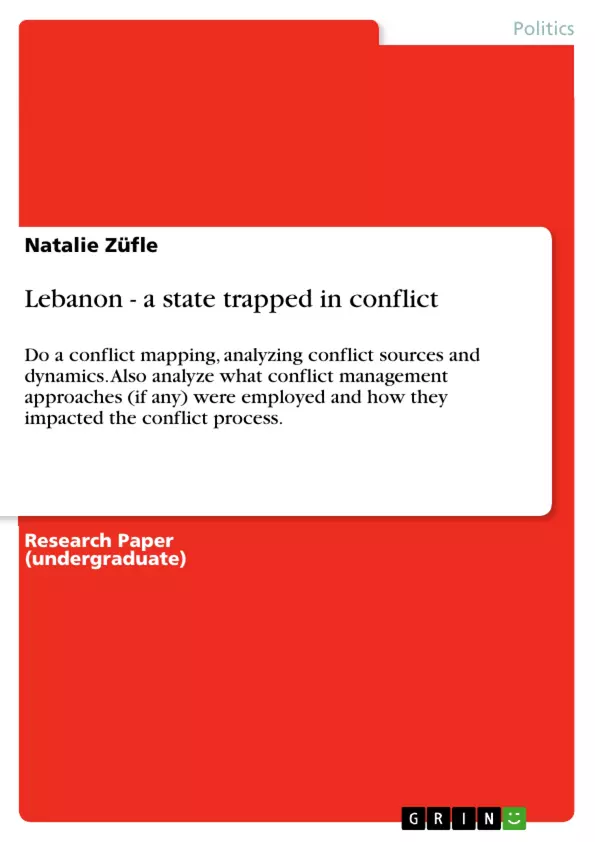As the analysis of the most recent conflict in Lebanon has shown, there have been successful efforts to solve two of the three major conflict issues by means of a mediation approach. However, several spoiling factors complicate a peaceful solution, and in particular the long-term aim of creating a durable and ultimate peace in the troubled country. However, additional approaches within the peacemaking as well as peacebuilding frameworks help to stabilize the country and can set examples for a stable and promising future. The upcoming elections in June 2009 will show, if Lebanon will carry on its way towards a sustainable and peaceful future in national unity.
Inhaltsverzeichnis (Table of Contents)
- Mapping the Lebanese conflict
- Mediation as conflict management approach
- Constraints
Zielsetzung und Themenschwerpunkte (Objectives and Key Themes)
This assignment explores the application of conflict management theory to a real-world conflict. It focuses on the 2008 crisis in Lebanon, examining its origins, dynamics, and the conflict management approaches employed. The analysis aims to identify key considerations, constraints, and potential alternative strategies for effective peacemaking and peacebuilding.- Conflict analysis and mapping
- Mediation as a conflict management approach
- Constraints and spoiling factors in conflict management
- Alternative conflict management strategies
- The role of political elites and local actors in peace processes
Zusammenfassung der Kapitel (Chapter Summaries)
- Mapping the Lebanese conflict: This section provides a comprehensive analysis of the 2008 Lebanese conflict. It explores the historical context, the key parties involved, and the underlying issues that led to the escalation of tensions. The author highlights the complex political system of Lebanon and its role in exacerbating the crisis.
- Mediation as conflict management approach: This section focuses on the mediation efforts undertaken by the Arab League to de-escalate the conflict. The author discusses the effectiveness of mediation as a strategy in the context of a “hurting stalemate” and the importance of consensus-building in achieving lasting peace. The impact of the mediation on different levels of interaction, from political elites to local communities, is also examined.
- Constraints: This section delves into the various constraints that can hinder conflict management efforts. The author analyzes the role of “spoiling factors” and how different actors, with varying levels of power and intent, can threaten peace processes. The analysis emphasizes the interconnectedness of these factors and their influence on conflict dynamics.
Schlüsselwörter (Keywords)
This assignment centers on the complex issue of conflict management, utilizing the 2008 Lebanese crisis as a case study. The key concepts explored include conflict analysis, mediation, consensus-building, spoiling factors, and peacemaking. It examines the interplay of political dynamics, sectarianism, and external pressures in shaping conflict management strategies. The analysis explores how conflict management approaches affect different levels of interaction, from elite-level negotiations to local community responses.- Citar trabajo
- Natalie Züfle (Autor), 2009, Lebanon - a state trapped in conflict, Múnich, GRIN Verlag, https://www.grin.com/document/180055



